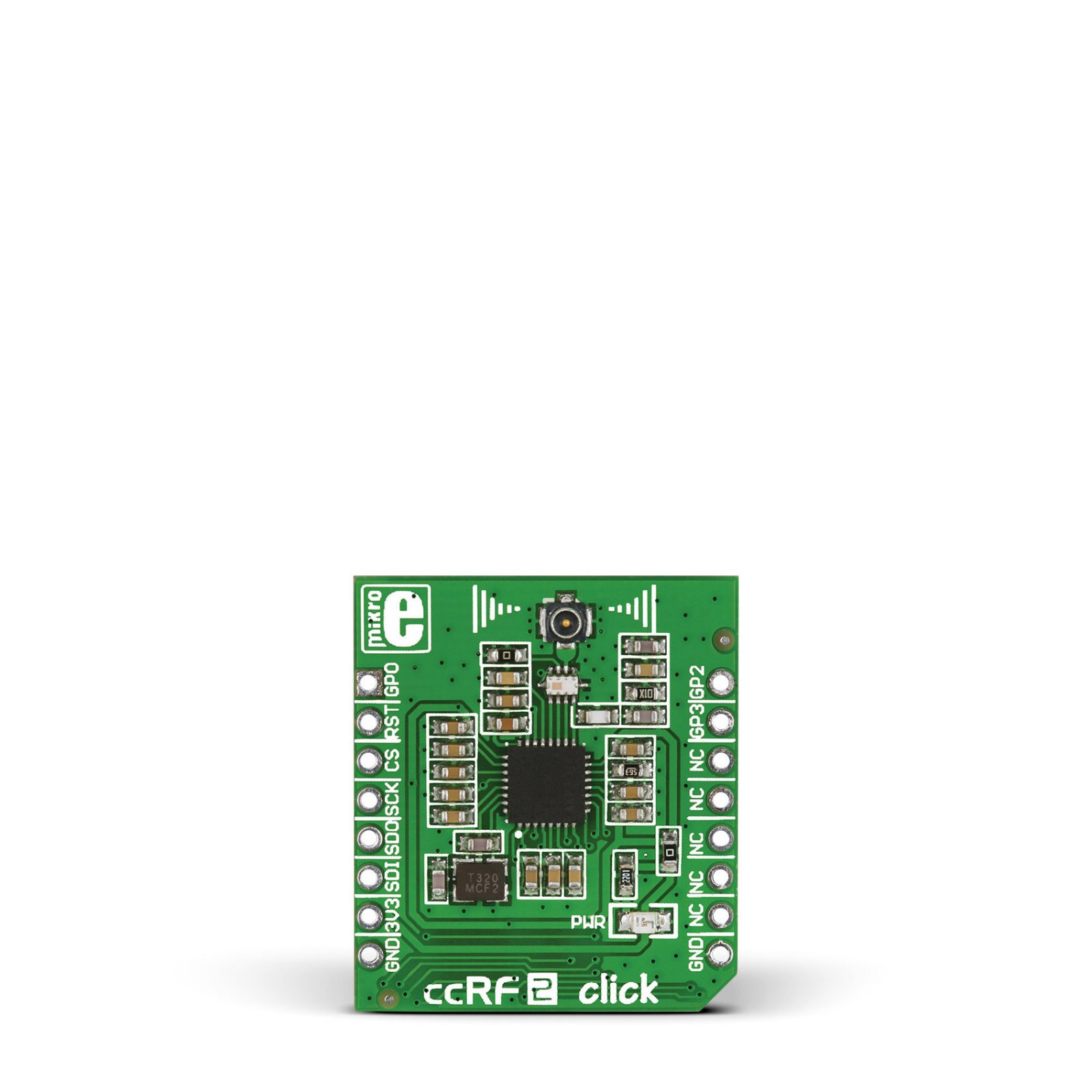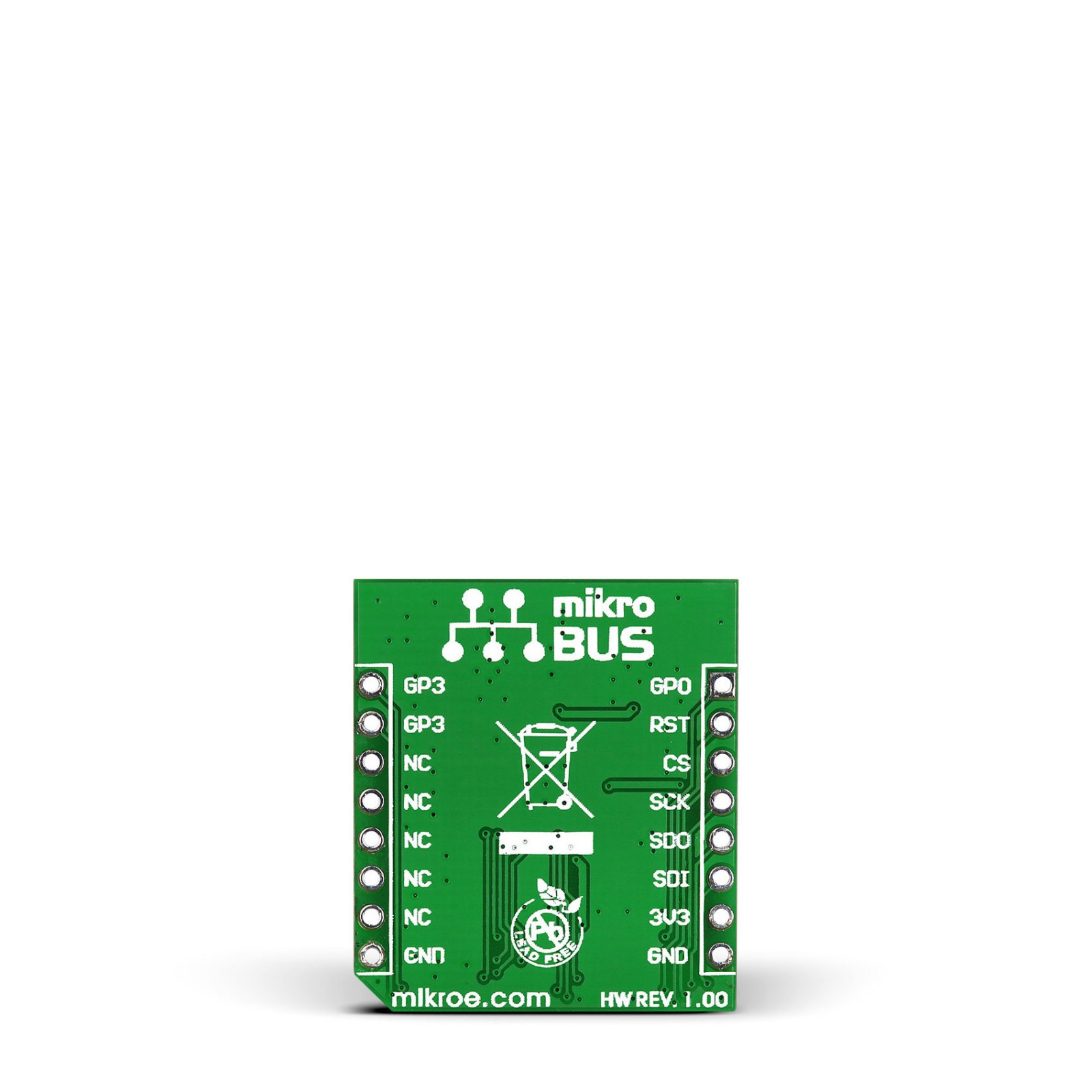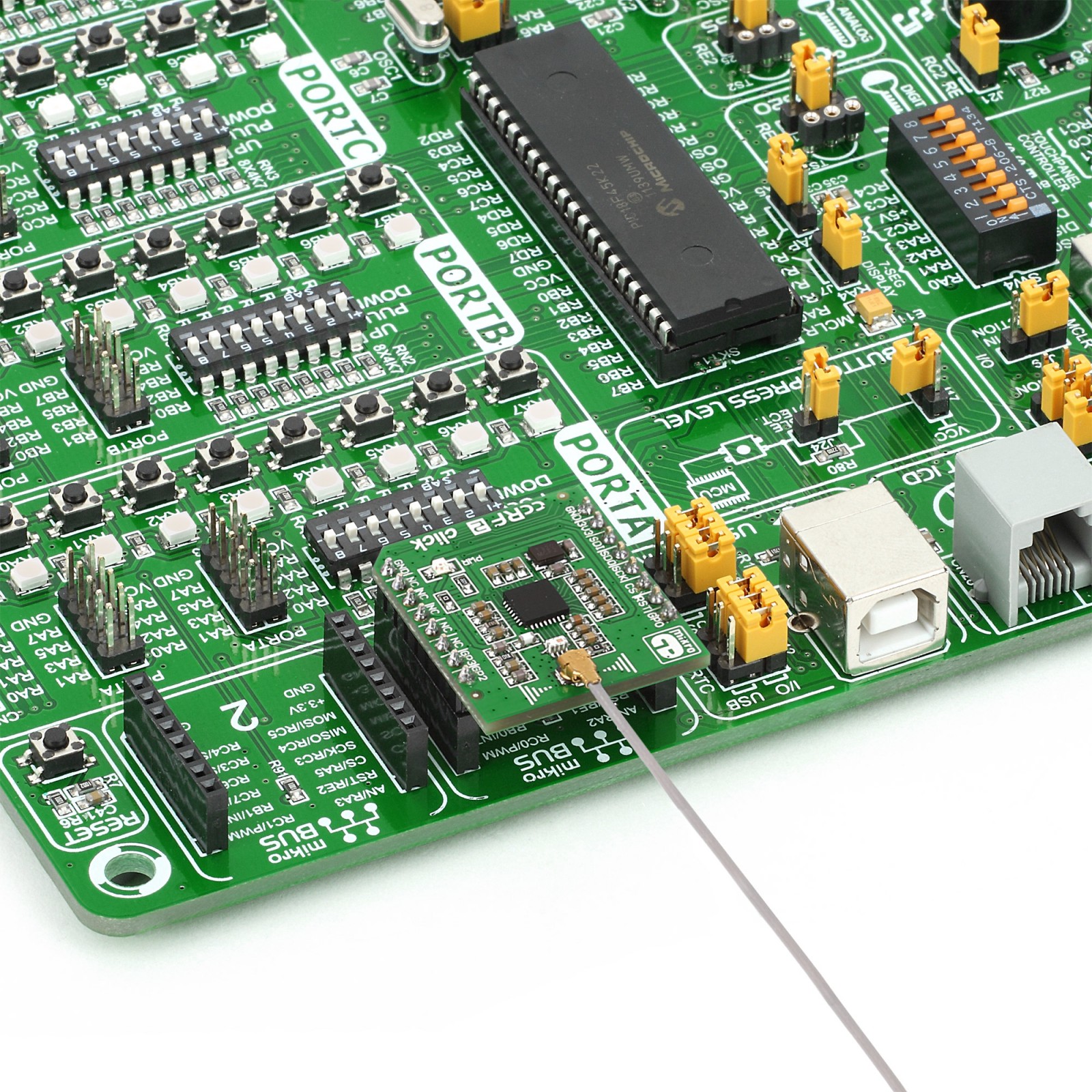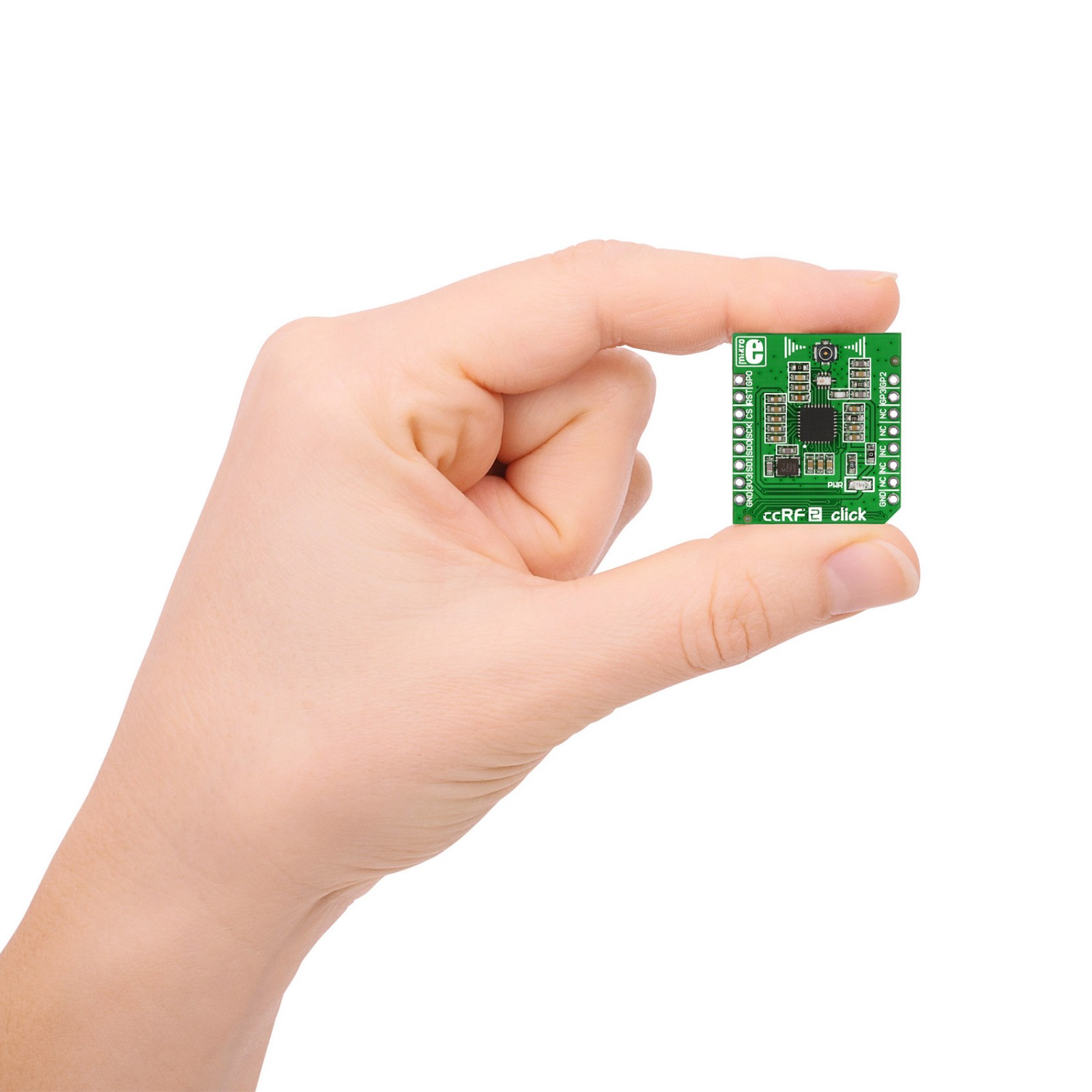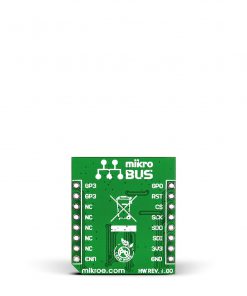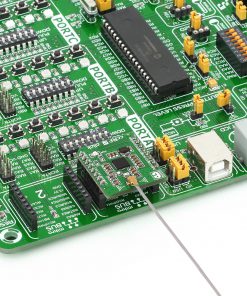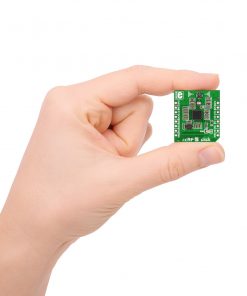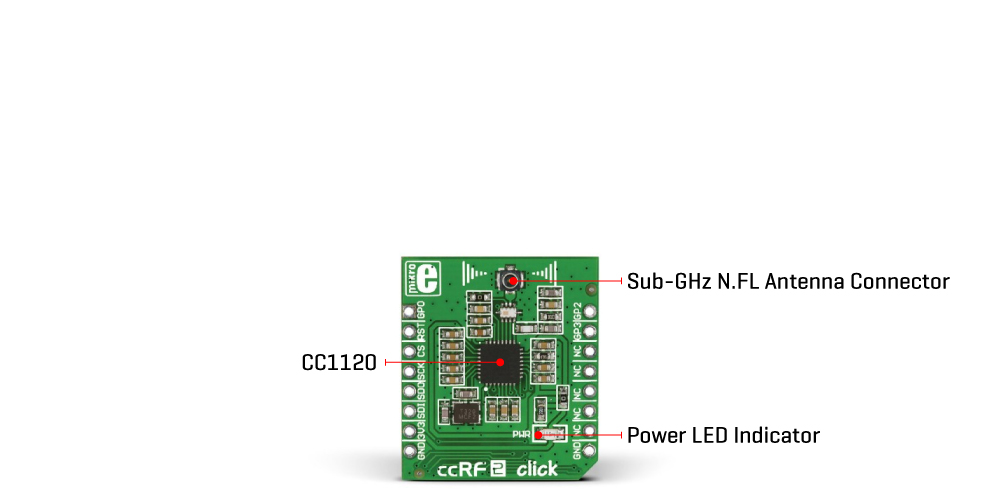Subtotal: R405.00
ccRF2 Click
R790.00 ex. VAT
ccRF2 Click is a compact add-on board that adds sub-gigahertz wireless communication to any MCU. This board features the CC1120, a high-performance RF transceiver for narrowband systems from Texas Instruments. With extremely low power consumption, this board is designed mainly for the ISM (Industrial, Scientific, and Medical) and SRD (Short Range Device) frequency bands from 868 to 928MHz. The CC1120 provides extensive hardware support for packet handling, data buffering, burst transmissions, clear channel assessment, link quality indication, and Wake-On-Radio. This Click board™ makes the perfect solution for home and building automation, industrial monitoring and control, wireless metering, and many more.
ccRF2 Click is supported by a mikroSDK compliant library, which includes functions that simplify software development. This Click board™ comes as a fully tested product, ready to be used on a system equipped with the mikroBUS™ socket.
Stock: Lead-time applicable.
| 5+ | R750.50 |
| 10+ | R711.00 |
| 15+ | R671.50 |
| 20+ | R646.22 |

 DAC Click
DAC Click 